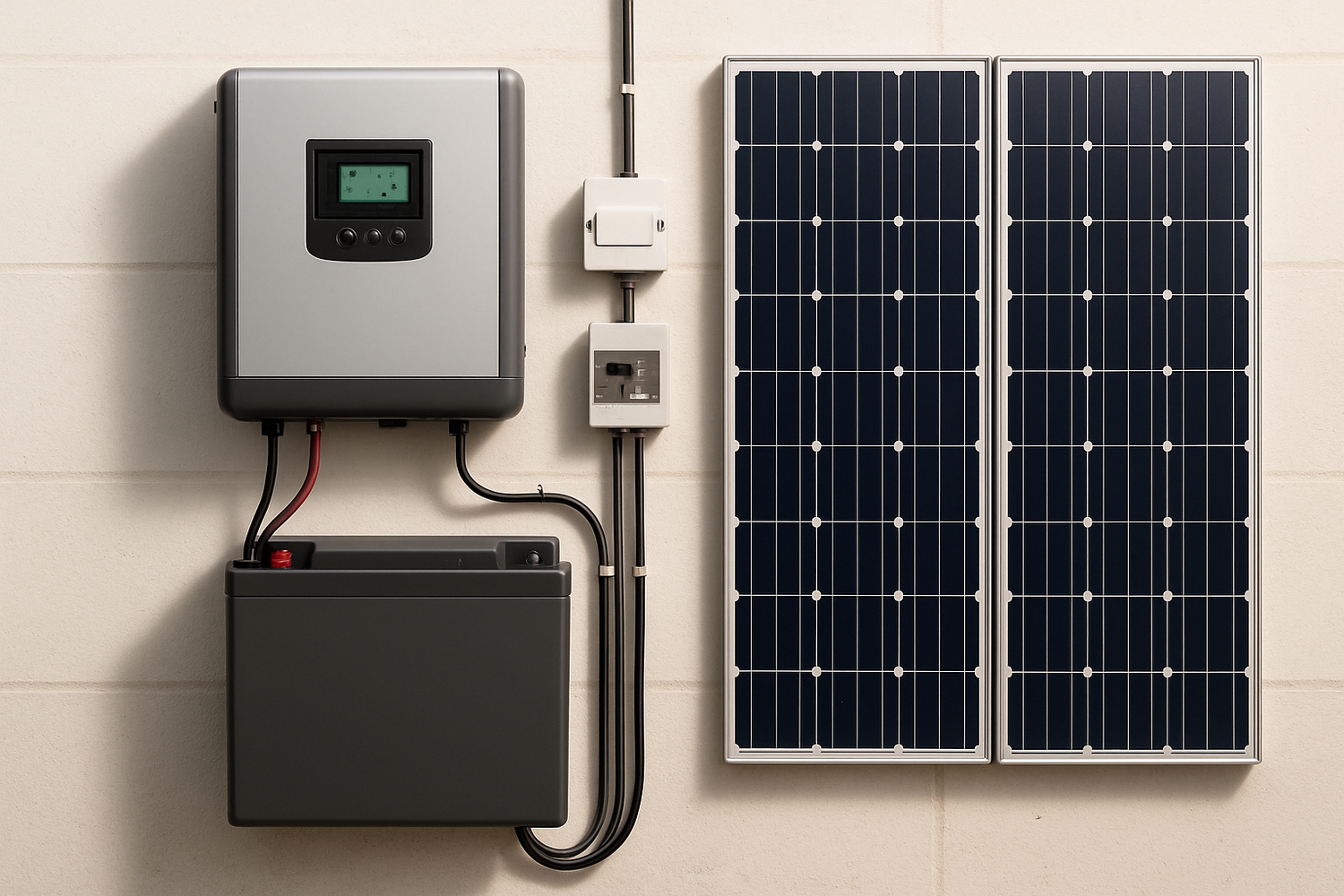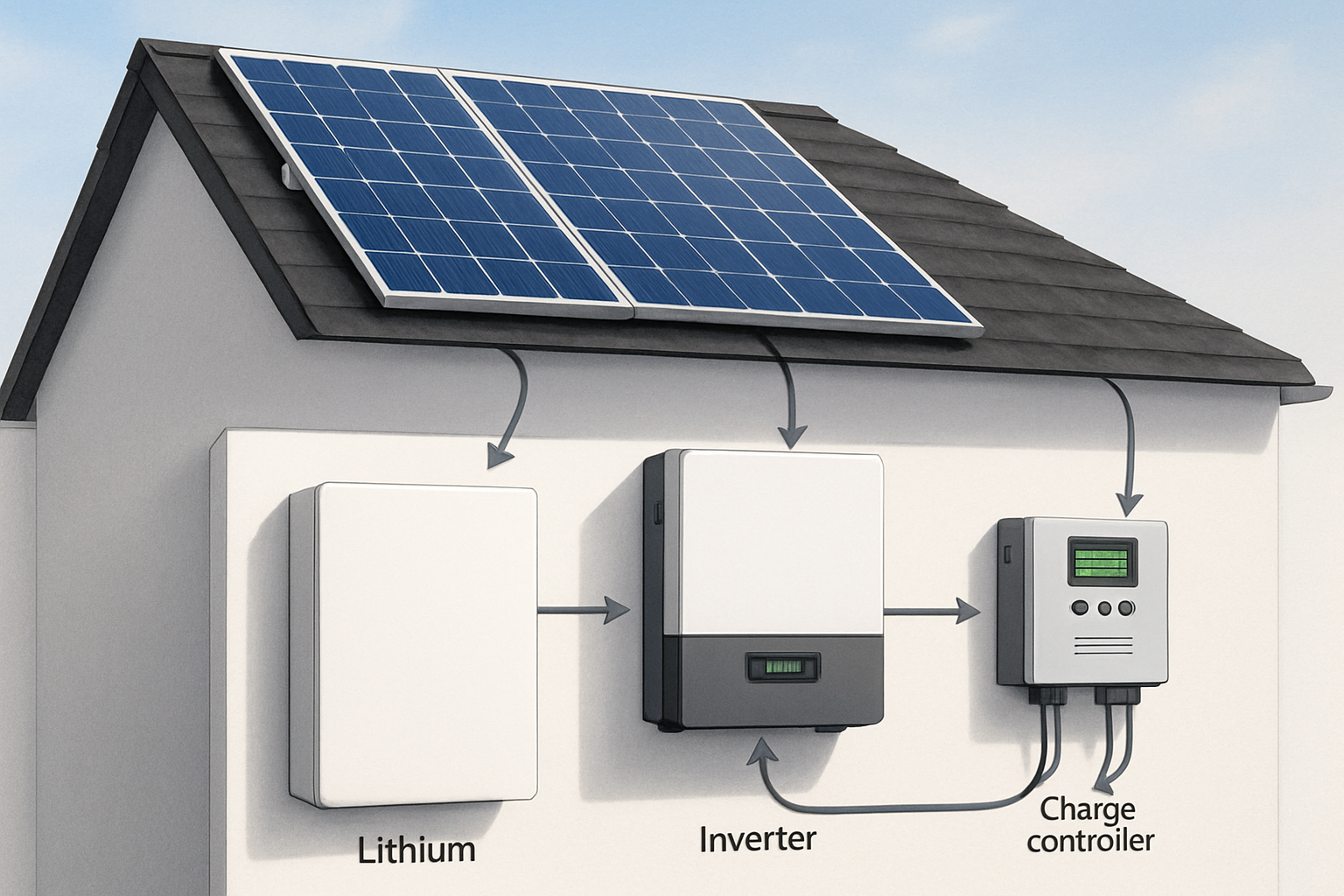Transitioning to an off-grid lifestyle offers true energy independence. Off-grid solar kits are central to this change, providing a reliable source of power. However, common misunderstandings about two critical solar power components—batteries and inverters—can prevent people from making effective choices. Clearing up these myths is the first step toward building an efficient and long-lasting system.
Myth 1: Any Deep Cycle Battery Works for an Off-Grid System
While it's true that off-grid systems require deep cycle batteries, not all are created equal. The chemistry of the battery has a significant impact on performance, lifespan, and overall value. Making the right choice is fundamental to your system's success.
Why Battery Chemistry Matters
The two main contenders in the deep cycle market are traditional lead-acid batteries and modern Lithium Iron Phosphate (LiFePO4) batteries. LiFePO4, a type of lithium-ion solar battery, consistently outperforms its older counterpart in nearly every metric relevant to solar applications. They offer a longer lifespan, higher efficiency, and greater usable capacity, making them a superior long-term investment.
| Feature | LiFePO4 Battery | Lead-Acid Battery |
|---|---|---|
| Cycle Life | 4,000 - 10,000 cycles | 500 - 1,000 cycles |
| Depth of Discharge (DoD) | 80-100% | 50% |
| Round-Trip Efficiency | ~95% | ~80-85% |
| Maintenance | None | Regular (e.g., watering) |
| Safety | High thermal stability, no off-gassing | Risk of off-gassing, acid spills |
The Impact of Depth of Discharge (DoD)
Depth of Discharge refers to the percentage of the battery that has been drained. A key advantage of a 100ah lithium-ion battery is its ability to be safely discharged up to 100% of its capacity without significant harm. In contrast, lead-acid batteries should only be discharged to about 50% to preserve their lifespan. This means a 100Ah LiFePO4 battery provides nearly double the usable energy of a 100Ah lead-acid battery, allowing for a smaller, lighter, and more efficient lithium battery storage setup.
Myth 2: A Bigger Inverter Is Always Better
Choosing an inverter, the device that converts DC electricity from your batteries to AC for your appliances, isn't about getting the biggest one you can afford. An oversized inverter can be inefficient and wasteful, draining your stored energy without providing any real benefit.
The Problem with Oversizing
Inverters have an efficiency curve, meaning they operate best when loaded to a certain percentage of their total capacity. An oversized inverter running a small load operates at the low end of its efficiency curve, wasting energy. More importantly, all inverters have a self-consumption or 'idle' power draw. A larger inverter will have a higher idle consumption, needlessly draining your battery bank 24/7.
Right-Sizing Your Inverter
To select the correct solar inverter, you must calculate your power needs. Add up the wattage of all appliances you plan to run simultaneously to find your peak load. Choose an inverter that can handle this peak load comfortably but isn't excessively oversized for your typical daily usage. Also, always opt for a pure sine wave inverter to ensure compatibility and safety for sensitive electronics like laptops and medical equipment.
Myth 3: Lithium Batteries Are Dangerous and Unreliable
Headlines about fires in consumer electronics have created a misconception that all lithium batteries are volatile. This is incorrect. The Lithium Iron Phosphate (LiFePO4) chemistry used in high-quality off-grid solar kits is one of the safest and most stable battery technologies available.
Understanding LiFePO4 Safety
LiFePO4 batteries have a different chemical and structural composition than the lithium-ion batteries found in phones and laptops. The P-O bond in a lithium phosphate battery is incredibly strong, making it highly resistant to overheating and thermal runaway even if punctured or short-circuited. They do not contain cobalt, a common element in other lithium chemistries that can contribute to thermal instability. Additionally, every reputable LiFePO4 battery includes a built-in Battery Management System (BMS). This electronic controller prevents overcharging, over-discharging, and overheating, adding a critical layer of active protection.
Longevity and Performance Data
Far from being unreliable, LiFePO4 batteries are known for their exceptional durability. A well-maintained 12v 100ah lifepo4 lithium battery can last for thousands of cycles, often translating to a service life of over a decade. The International Renewable Energy Agency (IRENA) has noted that declining costs and proven reliability are driving the rapid adoption of battery energy storage worldwide. For a comprehensive analysis of battery metrics, our ultimate reference on solar storage performance offers detailed insights into what makes this technology so resilient.
Myth 4: You Can Mix and Match Old and New Batteries
Expanding your battery bank might seem as simple as adding another battery. However, mixing batteries of different ages, capacities, or even chemistries in the same string is a recipe for poor performance and premature failure. A battery bank is only as strong as its weakest link.
The Challenge of Battery Banks
When batteries are connected in series or parallel, they should be as identical as possible. This ensures that they charge and discharge at the same rate. Introducing an older, weaker battery into a bank of new ones will cause an imbalance. The new batteries will be forced to work harder to compensate for the older one's diminished capacity.
Why Mismatched Batteries Fail
During charging, the new batteries will reach full charge before the old one, but the charger will continue to push current, leading to overcharging and damage. During discharge, the old battery will drain faster, pulling the voltage of the entire bank down and potentially causing the BMS to shut the system off prematurely, even if the new batteries still have plenty of power. This constant imbalance drastically shortens the lifespan of the entire bank.
Myth 5: Inverters and Batteries Operate Independently
An off-grid solar system is a cohesive unit, not just a collection of parts. The battery and inverter are deeply interconnected, and their compatibility is crucial for the system's overall health, efficiency, and safety. Their relationship is symbiotic.
The System Synergy
The most fundamental connection is voltage. The nominal voltage of your battery bank (e.g., 12V, 24V, or 48V) must match the DC input voltage of your inverter. A 48V LiFePO4 battery requires a 48V inverter. This ensures proper power transfer and prevents damage to the components. As noted by the International Energy Agency (IEA), proper system design and component integration are key to maximizing the performance of PV systems.
Communication and Optimization
Modern energy storage solutions often feature communication between the battery's BMS and the inverter. This allows the system to operate more intelligently. The BMS can tell the inverter to adjust the charging rate based on the battery's temperature or state of charge, leading to faster, safer charging and a longer battery lifespan. This integrated approach turns separate components into a smart, self-regulating home battery storage system.
Informed Choices for Energy Independence
Building a reliable off-grid solar kit depends on making informed decisions based on facts, not myths. By understanding the superior safety and longevity of LiFePO4 batteries, the importance of right-sizing your inverter, and the necessity of a balanced, synergistic system, you are well-equipped. These insights empower you to assemble an efficient and durable power solution that will serve you for years to come, securing your energy independence.
Frequently Asked Questions
What is the main advantage of a LiFePO4 battery in an off-grid solar kit?
The primary advantage is its long cycle life and high usable capacity. A LiFePO4 battery can often provide over 4,000 charge cycles while allowing you to use 80-100% of its stored energy, offering far greater long-term value and performance compared to traditional lead-acid batteries.
How do I choose the right size inverter for my system?
To choose the right inverter, calculate your maximum simultaneous power draw. Add up the wattage of all AC appliances you might run at the same time. Select an inverter with a continuous power rating that exceeds this total. For example, if your peak load is 1,500 watts, a 2,000-watt inverter would be a suitable choice.
Can I add more batteries to my system later?
It is best to build your battery bank correctly from the start. If you must expand, you should add batteries of the exact same model, capacity, and age. Adding new batteries to an old bank can cause performance issues and reduce the lifespan of all the batteries involved. If significant expansion is needed, replacing the entire bank is often the safest option.





Leave a comment
All comments are moderated before being published.
This site is protected by hCaptcha and the hCaptcha Privacy Policy and Terms of Service apply.